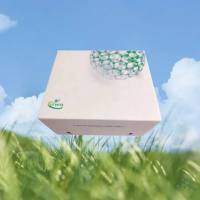In Situ Hybridization of Burkholderia cepacia Cells
互联网
互联网
相关产品推荐

Recombinant-Burkholderia-cepacia-Fusaric-acid-resistance-protein-FusCfusCFusaric acid resistance protein FusC
¥11858

MKN45人低分化胃癌细胞|MKN45细胞(Human Poorly Differentiated Gastric Cancer Cells)
¥1500

N-Butyldeoxynojirimycin,72599-27-0,film (dried <i>in situ</i>),阿拉丁
¥4326.90

Recombinant-Burkholderia-cepacia-Lipoprotein-signal-peptidaselspALipoprotein signal peptidase EC= 3.4.23.36 Alternative name(s): Prolipoprotein signal peptidase Signal peptidase II; SPase II
¥10262

Recombinant-Burkholderia-cepacia-NADH-quinone-oxidoreductase-subunit-AnuoANADH-quinone oxidoreductase subunit A EC= 1.6.99.5 Alternative name(s): NADH dehydrogenase I subunit A NDH-1 subunit A NUO1
¥9842
相关问答

